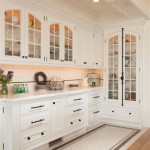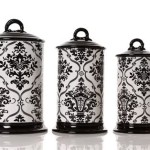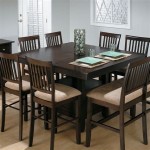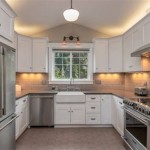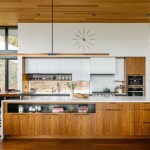Grey Kitchen Cabinets with White Countertops: A Timeless and Versatile Design Choice
The pairing of grey kitchen cabinets with white countertops has emerged as a prominent and enduring design trend in contemporary kitchens. This combination provides a balanced aesthetic, offering both sophistication and versatility. Its popularity stems from its ability to complement a wide range of architectural styles and personal preferences, while also providing a neutral backdrop that allows for the introduction of accent colors and textures through décor and appliances.
The appeal of grey and white kitchens lies in their ability to create a space that feels both modern and classic. The neutral palette allows for a calming and inviting atmosphere, which is particularly important in the kitchen, often the heart of the home. The contrast between the grey cabinets and white countertops provides visual interest without being overwhelming, resulting in a kitchen that is both stylish and functional.
Choosing the right shades of grey and white is crucial to achieving a harmonious and balanced look. There is a vast spectrum of grey tones, ranging from light, almost-white grays to deep, charcoal hues. Similarly, white countertops are available in various shades, including pure white, off-white, and creamy white. Careful consideration must be given to the undertones of each color, ensuring they complement each other and the overall design scheme.
Understanding the Versatility of Grey and White
One of the main reasons for the enduring popularity of grey kitchen cabinets with white countertops is its exceptional versatility. This combination can be adapted to suit a variety of kitchen styles, from traditional to modern and everything in between. The key to successfully incorporating this pairing is to tailor the specific shades of grey and white, along with the hardware and other design elements, to the desired aesthetic.
In a traditional kitchen, lighter shades of grey, such as dove grey or greige (a blend of grey and beige), can create a warm and inviting atmosphere. Paired with white marble or granite countertops, classic hardware, and traditional cabinetry styles, this combination can evoke a sense of timeless elegance. Conversely, in a modern kitchen, darker shades of grey, like charcoal or slate, can create a sleek and sophisticated look. When combined with white quartz countertops, minimalist hardware, and flat-panel cabinets, the result is a contemporary and stylish space.
Beyond the traditional and modern styles, grey and white kitchens can also be adapted to suit farmhouse, transitional, and even industrial design schemes. The flexibility of this pairing allows homeowners to create a kitchen that perfectly reflects their personal style and the overall aesthetic of their home. The adaptability stems from the neutral foundation, which allows other design elements to take center stage and define the overall character of the kitchen.
For example, a farmhouse kitchen might incorporate light grey cabinets with white subway tile backsplash, butcher block accents, and rustic hardware. A transitional kitchen could combine medium grey cabinets with white shaker-style doors, stainless steel appliances, and a mix of traditional and modern elements. An industrial kitchen might feature dark grey cabinets with white concrete countertops, exposed brick walls, and metal accents.
Key Considerations When Choosing Grey and White
While the combination of grey kitchen cabinets and white countertops is generally considered a safe and stylish choice, there are several key considerations to keep in mind to ensure a successful outcome. These factors include the lighting, the size of the kitchen, the undertones of the colors, and the overall design scheme.
Lighting: Lighting plays a critical role in how colors appear in a space. Natural light can significantly impact the perceived shade and tone of grey and white. A kitchen with ample natural light can handle darker shades of grey without feeling oppressive, while a kitchen with limited natural light may benefit from lighter shades of grey to maximize brightness. Artificial light, particularly the color temperature of the bulbs, also affects the appearance of the colors. Warm-toned lighting can make grey cabinets appear warmer, while cool-toned lighting can emphasize the grey's coolness. It is recommended to view samples of the cabinet and countertop materials in the actual kitchen space under various lighting conditions before making a final decision.
Kitchen Size: The size of the kitchen is another important factor to consider. In a small kitchen, lighter shades of grey and white are generally preferred as they tend to make the space feel larger and more open. Darker shades of grey can potentially make a small kitchen feel cramped and enclosed. However, in a larger kitchen, darker shades of grey can create a dramatic and sophisticated look without sacrificing the feeling of spaciousness. The contrast between the grey cabinets and white countertops can also help to define different areas within a larger kitchen, adding visual interest and depth.
Undertones: The undertones of both the grey and white colors must be carefully considered to ensure they complement each other and the overall design scheme. Grey can have warm (yellow, red) or cool (blue, green) undertones, and matching the undertones will create a more cohesive look. Similarly, white can have warm (yellow, beige) or cool (blue, grey) undertones. For instance, a grey with cool undertones will pair well with a white that also has cool undertones. Mixing opposing undertones can create a jarring or unbalanced effect. Consulting with a design professional or using color matching tools can help to identify the undertones of each color and select the most harmonious combination.
Overall Design Scheme: The choice of grey and white should also align with the overall design scheme of the kitchen and the rest of the home. Consider the architectural style, the existing furniture and décor, and the desired mood and atmosphere. The grey and white combination should complement these elements and contribute to a unified and cohesive design. Other design elements, such as the backsplash, flooring, hardware, and appliances, should also be carefully selected to complement the grey and white palette and enhance the overall aesthetic of the kitchen.
Choosing the Right Materials for Cabinets and Countertops
The success of a grey and white kitchen depends not only on the color choices but also on the materials used for the cabinets and countertops. The materials should be both aesthetically pleasing and durable enough to withstand the demands of a busy kitchen. There are numerous options available, each with its own distinct characteristics, advantages, and disadvantages.
Cabinet Materials: Common cabinet materials include wood, plywood, MDF (medium-density fiberboard), and laminate. Wood cabinets offer a classic and timeless look, but they can be more expensive and require more maintenance than other options. Plywood is a durable and stable option that is often used for cabinet boxes. MDF is a cost-effective and versatile material that is often used for cabinet doors and drawer fronts. Laminate cabinets are a budget-friendly option that is easy to clean and maintain, but they may not be as durable as other materials.
When choosing grey cabinets, consider the paint or stain finish. A high-quality paint or stain will protect the wood from moisture and wear and tear, while also enhancing its aesthetic appeal. Matte finishes are popular for creating a modern and understated look, while glossy finishes can add a touch of glamour and reflect more light. The choice of finish will also affect the ease of cleaning and maintenance. Matte finishes tend to show fingerprints and smudges more easily than glossy finishes.
Countertop Materials: Popular countertop materials include granite, marble, quartz, and laminate. Granite is a natural stone that is known for its durability, heat resistance, and unique patterns. Marble is another natural stone that is prized for its elegant beauty, but it is more porous than granite and requires more maintenance. Quartz is a manufactured stone that is highly durable, low-maintenance, and available in a wide range of colors and patterns. Laminate is a budget-friendly option that is easy to clean and maintain, but it is not as durable as other materials.
For white countertops, quartz and marble are particularly popular choices. White quartz countertops offer a clean and modern look, are highly resistant to stains and scratches, and require minimal maintenance. White marble countertops exude elegance and sophistication, but they are more susceptible to staining and etching and require regular sealing. Laminate countertops can provide a cost-effective alternative, but they may not offer the same level of durability or visual appeal as natural or manufactured stone.
When selecting countertop materials, consider the durability, maintenance requirements, and aesthetic appeal. Choose a material that will not only complement the grey cabinets but also withstand the daily wear and tear of a busy kitchen. It is also recommended to consider the environmental impact of the materials and choose sustainable options whenever possible.

Gray Kitchen Cabinets Selection You Will Love 2024 Updated

43 Gray Kitchen Cabinets With White Countertops Sleek Cohesive

Page Not Found For Creative Juice Timeless Kitchen Cabinet Design Renovation

43 Gray Kitchen Cabinets With White Countertops Sleek Cohesive

20 Fabulous Kitchens Featuring Grey Kitchen Cabinets The Happy Housie
15 Gorgeous Gray Kitchen Cabinets With White Countertops For A Modern Look Aprylann

Countertop Ideas For Gray Kitchen Cabinets

Grey Kitchen Cabinets White Countertops Design Ideas

43 Gray Kitchen Cabinets With White Countertops Sleek Cohesive

Grey Kitchen Cabinets White Countertops Design Ideas

